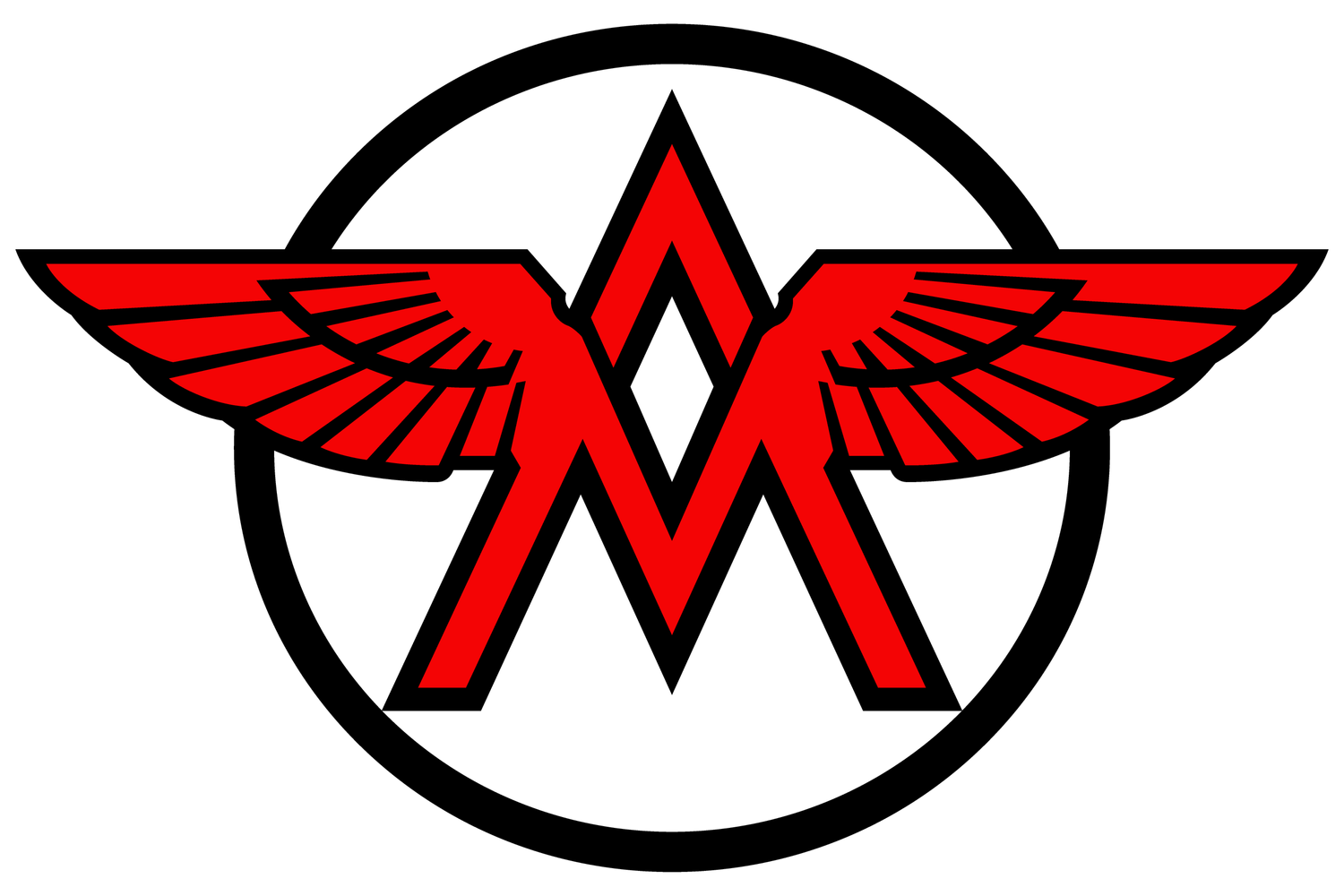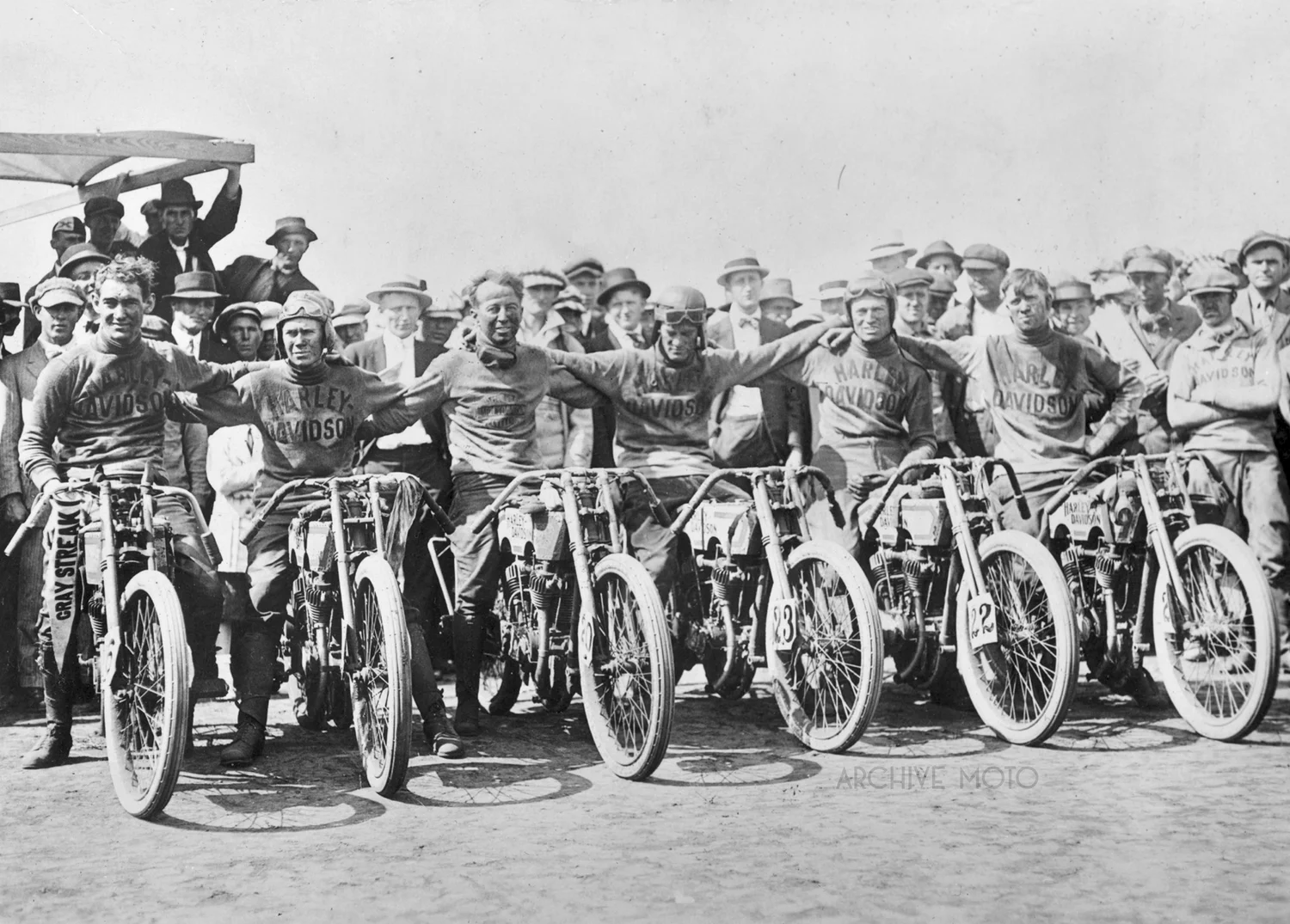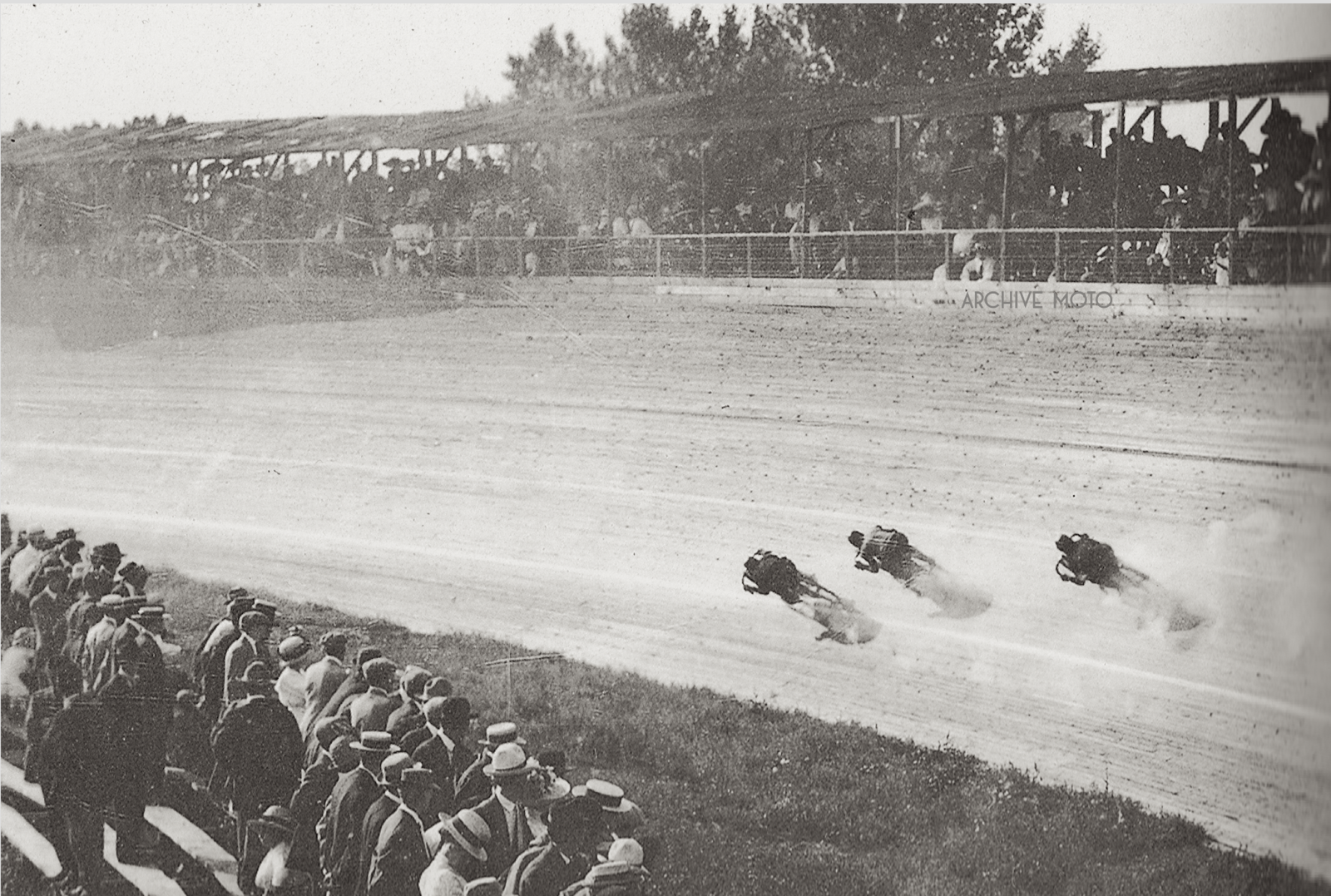Denver, like most metropolitan cities at the turn of the 20th century has a long heritage of motorcycling. However, Denver is unique in that it was the only city in America to construct and support two full sized board track motordromes. Though the Northeast had a number of tracks in close proximity of one another, and Los Angeles technically did have three tracks but with varying shapes and sizes, the two full sized circular motordromes in Denver, Lakeside and Tuileries, became a grand experiment as to how much competition Americans could handle, and made Denver an early capital of the sport.
Seen here a race on the shallow banking of Denver's Tuileries Motordrome ca. 1912, one of the first board track motordromes built in America. The track originally opened in the Spring of 1911 along with a second track at the White City Amusement Park, also known as the Lakeside Motordrome, an unique experiment in multi-track sustainability.
At first glance this photo seems to capture a moment shared between teammates, members of the eminent Harley-Davidson Wrecking Crew lined up either in anticipation of their victory, or perhaps just after, on a dusty dirt oval in the 1920’s. With a bit more investigation it is discovered that the photo comes from a series of M&ATA National Championship races held at Los Angeles’ old Ascot Park in January 1920, just as professional motorcycle racing in America was rebooting after WWI. The riders then begin to come into focus, from left to right, as Freddie Ludlow, Ralph Hepburn, Albert “Shrimp” Burns, and Otto Walker, but if the caption were to end there far too much of the story would remain untold.
If there is one machine which embodies the storied era of the board track motordrome it would no doubt be an Indian, and no configuration to have come out of the Springfield factory was more perfectly tailored for the infamous slanted timbers of America’s fabled dromes than Indian’s Big Base 8-Valve. Perhaps even more synonymous with the treacherous glory of the American motordrome is one of the company’s most notable talents, the young Texan William Edward Hasha.





